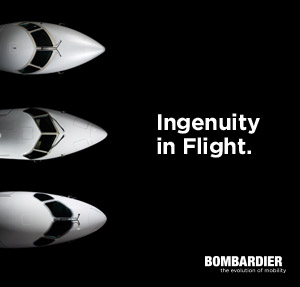Airbus Military A330 MRTT refuels second A330 MRTT
May 18, 2010
Airbus Military has for the first time demonstrated in flight “buddy” refuelling between two A330 MRTT aircraft.
To-date three such flights have been performed, the latest one being part of the certification flight trials. This type of operation further illustrates the capability of the new-generation A330 MRTT tanker to refuel any kind of large receiver, even wide-body aircraft like another A330 MRTT or receiver aircraft with complex aerodynamics such as the E-3 AWACS tested in February. It also demonstrates the capability of the aircraft as a receiver and means that the A330 MRTT is now both the largest aircraft to have refuelled an A330 MRTT and the largest to have received fuel from it.
The two aircraft used for these flight trials were the first two A330 MRTTs built for the Royal Australian Air Force. They are both now being used in the final stages of the certification programme due for completion in the next months.
During the flights, performed over the Gulf of Cadiz in southern Spain, fuel was passed from the refuelling aircraft´s Aerial Refuelling Boom System (ARBS) to the receiving aircraft´s Universal Aerial Refuelling Receptacle Slipway Installation (UARRSI).
Programme director Airbus Military Derivatives, Antonio Caramazana, said: “This latest flight demonstrates the ability of the A330 MRTT to refuel a true widebody aircraft and to conduct buddy-buddy refuelling between two tankers, which is a vital enabler for even longer range deployments.”
KAMAN DEMONSTRATES CARGO AIRDROP FLIGHT TESTS WITH UNMANNED HELICOPTER
May 4, 2010
WASHINGTON, May 5, 2010 – Kaman Aerospace Corporation, a subsidiary of Kaman Corporation [NASDAQ GS: KAMN], has proven in recent tests that the unmanned K‑MAX helicopter can resupply troops with cargo airdropped by parachute.
The tests add a new delivery method for the 6,000-pound power lifter, which Lockheed Martin [NYSE: LMT] and Kaman have successfully transformed into an unmanned aircraft system for autonomous cargo delivery operations.
At its Bloomfield, Conn., facility in late April, Kaman, in partnership with the U.S. Army’s Natick Soldier Research, Development and Engineering Center (NSRDEC), conducted 11 cargo airdrop tests from 300 ft. to 400 ft. above ground level. Kaman used its four-hook carousel for the drops, and during one flight, demonstrated four airdrops in a single mission.
Kaman performed the airdrops using the Army’s low cost low altitude cross parachute, a one-time-use expendable aerodynamic decelerator that costs about $375. Currently used to airdrop supplies from manned aircraft in Afghanistan, the parachute is designed to handle 80 to 600 pound payloads delivered from 150 ft to 300 ft altitudes above ground level.
“These airdrop tests continue our progress to advance the Unmanned K-MAX helicopter as a battlefield cargo delivery system,” said Terry Fogarty, general manager of Unmanned Aircraft Systems Product Group at Kaman Helicopters. “Airdropping cargo as an option to placing a sling load on the ground can enhance an unmanned aircraft’s survivability while delivering critical supplies in combat environments.”
The Army NSRDEC personnel collaborated in the airdrops. “The demonstration exceeded our expectations” said Richard Benney, division leader, Aerial Delivery Equipment and Systems Division. “This capability will save lives, allowing us to deliver supplies to our troops using unmanned helicopters, while also avoiding the threat to the delivery platform in high-threat areas.”
In January, Kaman and Lockheed Martin successfully demonstrated to the U.S. Marine Corps at Dugway Proving Grounds in Utah the capability of the unmanned K-MAX helicopter to resupply troops by unmanned helicopter at forward operating bases in Afghanistan. During the demonstration, the team showed autonomous and remote control sling load delivery over both line-of-sight and satellite-base beyond-line-of-sight data links.
Future tests may include the use of single and/or multiple Joint Precision Airdrop Systems (JPADS) from higher altitudes. JPADS could be used in higher threat environments to resupply multiple and dispersed ground forces from one unmanned K‑MAX release point.
Kaman designed the K-MAX helicopter to deliver sling loads up to 6,000 pounds at sea level, and 4,300 pounds at 15,000 ft. Lockheed Martin’s mission management and control systems give the K-MAX helicopter unparalleled flight autonomy in remote environments and over large distances.
“Autonomous flight will enable military users to fly the unmanned K-MAX helicopter in day or night conditions,” said Dan Spoor, Aviation Systems vice president at Lockheed Martin’s Mission Systems & Sensors facility in Owego, NY. “Adding an airdrop capability to the system gives the Army or Marines another resupply option.”

Sikorsky Aerospace Services to Perform A-to-L Upgrades on Royal Saudi Land Forces’ BLACK HAWK Helicopters
May 4, 2010
SHELTON, Conn., May 3, 2010 – Sikorsky Aerospace Services announced today the signing of a contract with the Royal Saudi Land Forces Aviation Command (RSLFAC) to upgrade its fleet of BLACK HAWK helicopters from the UH-60 A model configuration to the more modern UH-60L aircraft configuration. Sikorsky Aerospace Services (SAS) is the aftermarket division of Sikorsky Aircraft Corp., a subsidiary of United Technologies Corp. (NYSE:UTX).
Based on the success of the H-60 Helicopter Recapitalization and Upgrade Program on U.S. Army BLACK HAWK aircraft, the H-60 helicopter modernization program includes comprehensive fleet upgrades for Sikorsky’s global customers. The Royal Saudi Land Forces Aviation Command (RSLFAC) A-to-L conversion plan is the second international modernization program under contract with SAS. The first program is currently under way at Chase Field Operations Center in Texas, a Sikorsky Aerospace Services facility.
The A-to-L upgrade program incorporates key improvements consisting of a T700 to T701D engine upgrade for increased power and reliability, and upgraded flight controls, avionics and instrument panel modifications. Additionally, the upgraded H-60 helicopters will be equipped with a new Aircraft Flight Control Computer (AFCC) as well as new wiring harness, high speed shaft and seal lead acid battery.
“This conversion program will modernize the current Saudi fleet and allow for better commonality and integration with its newly acquired fleet of UH-60L aircraft. As we continue to successfully transition the UH-60 BLACK HAWK helicopter through our global modernizations programs, this Saudi project serves as an important launch point in the region,” said David Adler, president of Sikorsky Aerospace Services.
First test flight of Rafale fighter powered by upgraded M88-4E engine
May 4, 2010
Courcouronnes, May 4, 2010 – The first test flight of a Rafale fighter powered by the
Snecma (Safran group) M88-4E engine (formerly designated the “TCO Pack”, for total
cost of ownership) took place on March 22 at the Istres air base in southern France.
Lasting 1 hour and 30 minutes, the flight was a total success, and was used to
expand the flight envelope.
The complete test campaign for the M88-4E engine comprises some 70 flights in
2010, with different engine configurations. Ten test flights have been carried out to
date.
“We are satisfied with the successful initial flights of the M88-4E, the third major
engine upgrade, reflecting our continuing focus on research & development. The
latest evolution of the engine enables us to better meet the expectations of our
customer, by helping decrease the Rafale’s maintenance costs,” said Didier
Desnoyer, Snecma’s Vice President Military Engines.
The development of the M88-4E is proceeding very satisfactorily. The first ground test
of the engine was performed in September 2009. Development engines are now
undergoing ground performance and endurance tests, and a series of altitude
chamber tests was completed in late February. Qualification and delivery of the first
production-standard M88-4E is now slated for the end of 2011.
In January 2008, French defense procurement agency DGA awarded Snecma the
“TCO Pack” contract for the M88-2 engine. The aim of this contract was to extend the
service life and time between inspections for several parts of the engine.
Modifications mainly concern the high-pressure compressor and turbine.
Designed for the Rafale multirole fighter, the M88 is the first member of a family of
new-generation engines intended for 21st century combat and advanced training
aircraft. The M88-2 now powers all air force and naval versions of the Rafale. It is
particularly well suited to low-altitude penetration and high-altitude interception
missions.
French Navy receives First NH90
May 3, 2010
The French Navy has received the first
NFH variant of the NH90 helicopter.
The French naval aviation command will
soon undertake operational test and
evaluations.
The formal service introduction is expected
in late 2011.
The NH90 NFH helicopter weighs about
10 metric tons, and is developed to
replace European fleets of anti-submarine
and anti-ship helicopters.
It can also carry out other missions, such
as maritime rescue, Combat Search and
Rescue(CSAR), naval counter-terrorism
and anti-piracy, mine-laying, medical
evacuation, and troop and logistic transport.
Its weight, size, automatically folding rotor
blades and tail boom allow it to be embarked
on light and heavy frigates and on helicopter
carriers.
Israel Rafalovich
Argentina Signs Defence Deal With Russia
April 27, 2010
Argentina announced plans to buy two
MI-171E transport helicopters from Russia.
The $30 million deal was brought together
by Argentina’s Defence Ministry and Russia’s
government arms export agency Rosoboronexport.
Argentina joins seven other Latin American
countries, Bolivia, Brazil, Colombia, Mexico, Peru,
Uruguay and Venezuela, that have increasingly
turned to Russia for weapons.
The Russians also signed the purported $1.5 billion
contract, winning over rival EADS’s Tiger and the
Italo-Turkish production of the AW-TAI A129
Mongoose.
Israel Rafalovich
First MI-35M Helicopters For Brazilian Air Force
April 25, 2010
Brazil’s Air Force received the first Russian MI-35M
attack helicopters into service and are now designated
as AH-2 Sabres.
It is the first Russian military aircraft acquired by Brazil.
It is also the first helicopter in the FAB inventory
that was designed specifically for combat.
The aircraft has armor protection, fixed 23mm,
double barreled cannon mounted on a mobile turret,
the ability to launch rockets and surface-air missiles,
heat suppressors hindered the view of the aircraft by
infra red, and a series of counter-measures.
The purchase was formalized in October 2008, and
involves a package of 12 more helicopters and related
spares for maintenance for five years as well as training
services at a cost of $363.9 million.
The remaining nine helicopter will be delivered by the
end of 2011.
The MI-35M was selected following a competition with
the AgustaWestland AW109 and AW129 and Eurocopter’s
Tiger.
Israel Rafalovich
Airbus Military Completes Certification Flight Tests
April 21, 2010
Airbus military has completed all the flight test required
for the certification of the new-generation hose-and drogue
refueling system on the A-330 Multi Role Tanker Transport(MRTT).
This opens the way towards the formal military certification of the
system from Spain’s INTA certification authority this summer.
Meanwhile, flight testing of the Airbus Military Aerial Refueling
Boom System(ARBS) are expected to be completed soon.
Delivery of the first A-330 MRRT will be delivered to the Royal
Australian Air Force later this summer.
The A-330 MRTT is fitted with Cobham 905 system, which
provides refueling from under-wing-pods.
Testing covered all of the flight envelope required to certify
the aircraft handling, and included a wide range of manoeuvers
both in free-flight and in coupled mode with Spanish Air Force
F-18 fighters.
Israel Rafalovich
EADS Plans To Bid For Tanker Contract
April 21, 2010
The European Aeronautic Defence and Space
Company(EADS) has relaunched its bid to supply
the US Air Force with a new aerial refueling tankers.
EADS intends to submit a proposal on July 9 in a
bid that is valued $35 billion.
Ralph Crosby, chairman of EADS North America said
that EADS felt “almost compelled” to enter the
competition to offer its A-330-based tanker.
EADS will now bid as the prime contractor for the
project. Its partner Northrop Grumman dropped out
six weeks ago, amid complaints that Washington
was engaging in protectionism that favored Boeing.
EADS had tried but failed to line up another American
partner to take Northrop’s place.
Northrop and EADS won a previous US tanker contract
in 2008, but the Pentagon canceled the deal after
government auditors upheld a protest by Boeing that
errors were made in the bid process.
The competing companies now have until July 9 to
submit their bids.
The Pentagon welcomed the renewed competition
for the tanker replacement program, and said it
expected to decide on a winner for the supply of
179 planes by early fall.
By choosing to compete, EADS could ensure solid relations
from the Pentagon in the future even if it lost the tanker
contract.
The Air Force see the KC-X aircraft as crucial to reinforcing
American air power and are anxious to replace the older Boeing
KC-135 Stratotankers that date back to the 1950’s.
Israel Rafalovich
France orders eight additional Airbus Military CN235
April 18, 2010
The Ministry of Defense of France and Airbus Military have signed a contract for the acquisition of eight CN235-300 aircraft for the French Air Force.
Delivery of the newly ordered CN235s will begin middle of next year as a measure to replace part of the aging C160-Transalls when used for missions involving the transport of less than six tonnes of payload.
These aircraft come in addition to the 19 CN235-200 already in operation with the French Air Force. They will help developing light transport, logistics, and paratroop training missions. Recently, three Fort de France (French Caribbean) based CN235s significantly contributed to the Haiti relief activities.
The maintenance of the new aircraft will be handled by Airbus Military through the FISS (Full In Service Support) agreement.
“We are very pleased that the French Air Force has once more selected one member of our product family. This contract once more demonstrates that we have the right product range to satisfy their most varied needs in terms of strategic and tactical transport needs” said Domingo Ureña, CEO of Airbus Military.
To date, more than 800 Airbus Military Light and Medium aircraft have been ordered by 128 customers and nations, of which 645 are in service in 57 countries both for military and civic/humanitarian missions.







